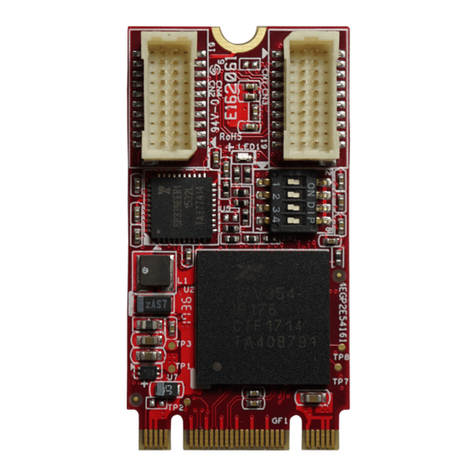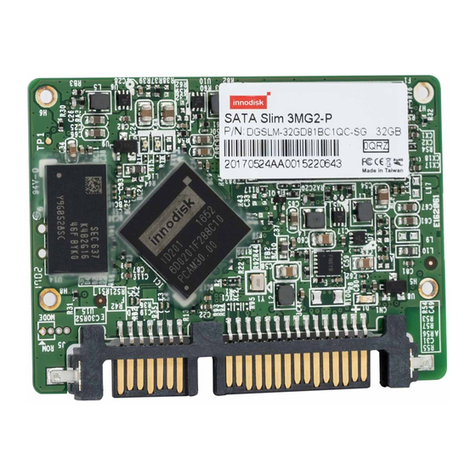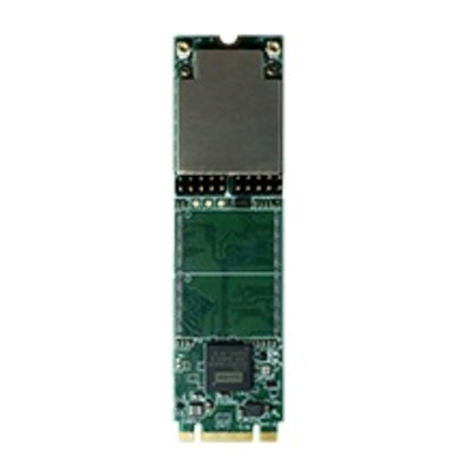
SATADOM-SH 3SE
2Rev 1.3 TPS, Jan., 2015
Table of contents
LIST OF FIGURES .......................................................................................................................................................6
1. PRODUCT OVERVIEW .........................................................................................................................................7
1.1 INTRODUCTION OF INNODISK SATADOM-SH 3SE..........................................................................7
1.2 PRODUCT VIEW AND MODELS ...............................................................................................................7
1.3 SATA INTERFACE...................................................................................................................................7
2. PRODUCT SPECIFICATIONS ...........................................................................................................................8
2.1 CAPACITY AND DEVICE PARAMETERS...................................................................................................8
2.2 PERFORMANCE ........................................................................................................................................8
2.3 ELECTRICAL SPECIFICATIONS ...............................................................................................................8
2.3.1 Power Requirement............................................................................................................................8
2.3.2 Power Consumption ...........................................................................................................................8
2.4 ENVIRONMENTAL SPECIFICATIONS ......................................................................................................9
2.4.1 Temperature Ranges .........................................................................................................................9
2.4.2 Humidity....................................................................................................................................................9
2.4.3 Shock and Vibration ...........................................................................................................................9
2.4.4 Mean Time between Failures (MTBF) ......................................................................................9
2.5 CE AND FCC COMPATIBILITY ...............................................................................................................9
2.6 ROHS COMPLIANCE ...............................................................................................................................9
2.7 RELIABILITY .........................................................................................................................................10
2.8 TRANSFER MODE ..................................................................................................................................10
2.9 PIN ASSIGNMENT .................................................................................................................................10
2.10 MECHANICAL DIMENSIONS...............................................................................................................11
2.11 ASSEMBLY WEIGHT ...........................................................................................................................11
2.12 SEEK TIME ..........................................................................................................................................11
2.13 HOT PLUG...........................................................................................................................................11
2.14 NAND FLASH MEMORY.....................................................................................................................11
3. THEORY OF OPERATION.................................................................................................................................12
3.1 OVERVIEW.............................................................................................................................................12
3.2 SATA III CONTROLLER ......................................................................................................................12
3.3 ERROR DETECTION AND CORRECTION................................................................................................13
3.4 WEAR-LEVELING ..................................................................................................................................13
3.5 BAD BLOCKS MANAGEMENT ................................................................................................................13
3.6 POWER CYCLING ..................................................................................................................................13
3.7 GARBAGE COLLECTION.........................................................................................................................13
4. INSTALLATION REQUIREMENTS ...............................................................................................................14
4.1 SATADOM-SH 3SE PIN DIRECTIONS.............................................................................................14






























